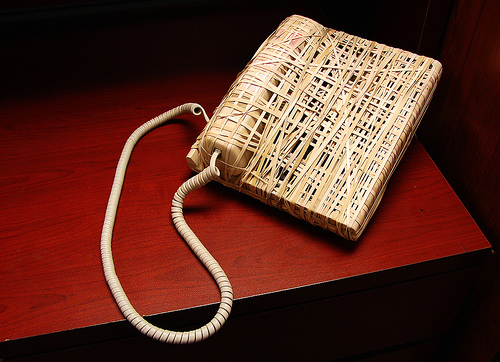
Mary Pat: How did ProtoQue come to be?
Peter: About 8 years ago my practice, Ocala Eye, was receiving as many as 1000 phone calls on a busy Monday, many of these non-urgent calls such as prescription refills, contact lenses orders, and the like, and these were making it difficult to give particular attention to those patient-related phone calls that needed to be triaged urgently. We were using telephone note pads like most other medical practices. This resulted in patients slipping through the cracks: missed calls, not calling patients back in a timely manner, poor accountability (who dropped the ball), and inadequate documentation.
Hence, our IT people created a web-based app for our own needs. Accountability improved, customer service was enhanced and patients no longer were left in the lurch – and everything was time-stamped and documented with an audit trail. Even after we converted from paper records to digital, we realized that EMR systems lack the accountability feature – known as the ‘chain of custody’ (see below) – that is critical to keeping track of serious patient issues. So, we continued to use ProtoQue right along with our EMR sytem.
Mary Pat: One of the most interesting facts about ProtoQue is that it has actually been in use for a number of years in medical practices, although it’s not been available to the public. Does that mean that all the bugs have been worked out?
Peter: After seven years and over 60 users, pretty much. However, as users’ needs change and grow, so does the software. And this always creates the potential for unintended consequences. We use agile methodology for the product development which allows us to identify and correct any new bugs quickly and efficiently without interruption of service Additionally, it can be adapted to the particular workflow of any practice.
Mary Pat: Can you talk me through the way a patient call would work using ProtoQue?
Peter: Its strength is in its simplicity. Every patient-related phone call gets logged into the system by the receptionist or call center operator. ProtoQue guides them through the required questions. These questions also help standardize the process; whether the medical assistant is experienced or a newbie, the application ensures that the same questions are always asked. That also makes it a great training tool.
Once completed, the ‘assessment’ is handed off to the next ‘queue’, in the same way that a relay race runner hands off a baton to the next runner – this ensures accountability. In our example, the second runner is the medical assistant or nurse who then must complete a second set of predetermined questions to further screen or triage the call. The next handoff may be to either a supervisory staff member or physician. And every single ‘transaction’ is documented and time-stamped, providing an unalterable audit trail.
Going back to our relay race analogy, paper notepads or even EMR messaging systems throw the ‘baton’ to someone but cannot ensure whether the handoff occurred or not. The paper-based process has no audit trail and the EMR-based process can only occur within an existing patient record – it cannot document communications outside the chart, new patients or hospital consults that do not already have a chart.
Lastly, ProtoQue allows the supervisor or a doctor to monitor all items that have been logged. Reports can be generated by several variables including provider, type of assessment, or employee. This further ensures accountability since employees “respect what we inspect and not what we expect.”
Mary Pat: This product was developed in an ophthalmology practice – how can practices customize it for their specialty and their workflow?
Peter: Regardless of specialty, a medical practice can customize ProtoQue with the types of assessments, questions, users, and locations specific to its situation. In the case of Ophthalmology practices, they have to deal with both surgical and medical problems, as well as a variety of retail issues such as glasses and contact lenses. ProtoQue’s versatility makes it suitable for all practices.
ProtoQue is simple to use – once set up, a practice can be using it within minutes. This avoids the all-to-common frustration inherent in software products that are so complex it sets the user up for failure. On the other hand, for larger practices it is highly configurable. The practice’s designated ‘administrator’ can decide who can ask what questions, which questions are required and at what point in the assessment the questions are to be asked.
Mary Pat: You talk about “chain of custody” for patient communications. Tell me what that is and why it’s critical for a medical practice.
Peter: Chain of custody, commonly used in everything from industry to law enforcement, states that every transfer of information from person to person be documented and that it be provable that nobody else could have accessed that evidence; in addition, the number of transfers should be minimized. In the case of a phone triage issue, it belongs to a specific person in this ‘chain’ until it is formally passed off to the next person in the chain. This is what ensures accountability.
Paper notes, in contrast, lack accountability, cannot track every outbound and inbound phone call related to a triage issue, and certainly cannot ensure that the documentation has not been altered.
And while EMR systems have tasking or messaging functions, they cannot document the trail of documentation around phone calls which often take place outside of the patient chart, between staff members, after hours, or regarding new patients or hospital consults. EMR’s ‘chart-centric’ nature is comprised of multiple layers like an onion. ProtoQue’s advantage is the simplicity of its single layer: it only does one thing but does it well.
Mary Pat: I see that you mention the Julie K. Briggs protocol – is that a feature that comes with the software or something additional that can be purchased?
The Julie K. Briggs protocol is suggested as a template for setting up required questions, for practices that aren’t sure where to start. But understand that these are primarily for use by nurses and may not be entirely applicable for use by a call center which is merely screening patient calls.
We have as a built-in feature a database licensed from the Schmitt-Thompson phone triage protocols which are used by many EMR systems. These protocols can be used to standardize a medical practice’s screening and triaging processes as well as to improve staff training. But the flexibility of ProtoQue is such that it allows each practice to decide which questions to ask, when, by whom, and whether or not they are required.
Mary Pat: When I saw the product, one thing that caught my eye was the spell-check function, which I thought was brilliant. Can you talk about that feature?
Peter: This is a mature product, in that it has been tested in busy practices over several years, throughout tens of thousands of phone triage assessments. One of the advantages of this is that we have been able to identify potential sources of error. One those is misspellings. This is important not only for medicolegal reasons but also to be able to consistently search for data. And since the audit trail functionality does not allow any changes to saved information, it is important to get it right the first time.
Mary Pat: Most practices have seen a big increase in phone volume since the economy hit bottom and patients started calling more and coming into the practice less. How does ProtoQue help practices manage call volume?
Peter: ProtoQue helps call staff quickly screen the urgency of a patient call and tag it with the appropriate assessment type, which can be customized by the practice. For example, in an ophthalmology practice, these assessment types would include urgent, contact lens, prescription refill, optical, billing, etc.
Even as we have added providers and the practice has grown, we have seen a decrease in telephone call volume. Using the built-in analytics feature in ProtoQue, we have been able to determine that this is primarily due to patients not having to call back multiple times because their calls were returned in a timely manner or because their issue – whether prescription refill or contact lens renewal – was dealt with promptly and more efficiently. Imagine that a patient with a recurring problem calls back and the call center has no idea with whom the patient spoke, resulting in even more calls. We were able to drastically reduce this problem.
Mary Pat: How does ProtoQue interface with an EMR?
Peter: ProtoQue integrates in two ways: first, it queries your practice management system to see if the patient is already an existing patient. It double checks the birthdate to ensure there is no duplication of information. And it uses a patient ID that is their primary ID from the EMR system if the practice has one. This ensures that triages are always attached to the correct person in the EMR.
Second, since ProtoQue is a web-based application, if your practice uses an EMR that allows for a template or a method to launch a website from within the EMR, ProtoQue can load a patient’s triage internally by utilizing the primary ID I mentioned above. So, a completed phone triage record can be viewed from inside the patient’s chart and the application can be launched from the EMR as well.
Mary Pat: What are the barriers to adoption?
Peter: Educating others that they can do things much better. Sometimes the most obvious problem is not so obvious. If you ask a doctor or practice administrator where their phone triage process fails, many of them may not know what you are talking about. But ask them how often patients slip through the cracks, causing frustration for both the patient and the doctor, and subsequently angst for the administrator, and they can start recounting numerous examples. If you don’t know of a better way of doing something, you can never change it. And that’s where most practices are with their telephone sticky-notes and their EMR messaging features.
Mary Pat: What is the downside of not having an application like ProtoQue in your practice?
Initially, as physicians, we were primarily concerned about the risk management issue around telephone triage and that is how we explained ProtoQue’s utility to other physicians. And malpractice insurance companies who have seen it – and who pay out millions in claims concerning telephone triage cases – think that every practice should be using a tool like ProtoQue. While this is very important, we also found that ProtoQue resonated more with practice administrators as a productivity tool: better phone communication leading to better accountability leading to better customer service leading to a better bottom line. And THIS results in happy doctors (and a happy administrator!)
Mary Pat: You mentioned that you are currently in beta with a number of practices. Are you still looking for practices to test the software?
Peter: Yes, we are. We are looking for a variety of specialties and practice sizes. If anyone reading this is interested in being a Beta Test Site, please contact our technology partners at Untangled Solutions at 1-909-563-8578 ext 2106. For more information on the product itself, we have a short video on our homepage here.
Peter J Polack MD FACS, is CEO of Protodrone, LLC and Managing Partner of Ocala Eye, PA in Ocala, Florida.
Phone Photo Credit: Furryscaly via Compfight cc


